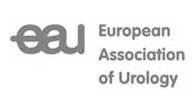What is Percutaneous nephrolithotomy?

Percutaneous nephrolithotomy is a procedure to remove large stones from the kidneys or ureters.
Procedure of Percutaneous nephrolithotomy
The procedure is indicated for stones resistant to shockwave lithotripsy (a non-invasive method that uses sound waves), large stones (more than 2 cm) that occur as a result of kidney infections that require complete removal, and stones that are high up in the ureter near the kidney.
Percutaneous nephrolithotomy is performed under general or spinal anaesthesia and involves making an incision in your back and inserting a hollow tube through the kidney to reach the stone. Smaller instruments are then introduced through the tube to remove the stone.
Risks and Complications of Percutaneous nephrolithotomy
A 2-3 day hospital stay is required after the procedure and you may return to your regular activities in a week. Risks of the procedure include kidney damage, bleeding, injury to surrounding structures such as colon or bladder, and loss of kidney function.







